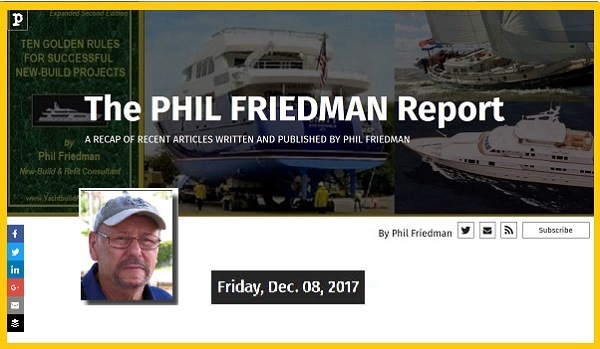Sizing Generators to Run Greener and Cleaner

MOST AUXILIARY GENERATORS IN YACHTS ARE OVER-SIZED AND, AS A RESULT, GROSSLY INEFFICIENT…
It ain't brain surgery. It doesn't even take a degree in electrical engineering. Only a grasp of some fundamental principles concerning marine auxiliary power generating equipment, and some sensible load analysis.
Notwithstanding relatively recent improvements in fuel delivery systems on power plants, the single most effective step in maximizing generator life and minimizing fuel waste and pollution is to assure that a genset is sufficiently loaded during (nearly) 100% of its running time. This is especially true in the case of diesel generators, which should operate at 65% to 75% of their rated continuous load capacity.

The single most important factor working against meeting the ideal generator loading in a yacht application is the wide variation, from minute to minute and hour to hour, of electrical load conditions on such vessels...
I've actually sat in on dozens of meetings in which hours and hours have been spent developing a full load analysis for a yacht new-build, and more time spent matching the genset capacities with the anticipated loads, then still more time invested specifying load-sharing and load-paralleling equipment to enable the auxiliary power generating system to adjust capacity to meet differing load conditions efficiently, only to have...
The yacht's prospective owner or captain or chief engineer say, "Hey, we want each genset in the pair sized to carry the full hotel load on its own."
At which point, I always recommend trashing plans for spending hundreds of thousands of dollars on load-sharing and paralleling equipment, and replacing that equipment with a simple giant double throw knife switch.

If you want each unit in a twin genset arrangement to be able to handle the "full hotel load", save a pile of dough by specifying a giant knife switch to control which unit powers the house electrical system at any given time.
However, understand that if you do, in most cases, you will end up with your genset(s) running almost 100% of the time badly under-loaded. Which some people might think increases their longevity. Wrong.
Running under-loaded generally causes a generating set, especially a diesel one, to run cool and/or fuel rich. This, in turn, causes smoking and coking.
Smoking due to unburned fuel being present in the exhaust. Coking (the rapid development of internal carbon deposits that degrade combustive efficiency and operating life) because the genset's internal temperatures are generally cooler than they need to be for preventing excessive carbon build up.
So, why not increase the loading on the genset by heating the ocean?
Some years ago, the fad fix for this situation was to add a load-cell system that employed resistance coils to heat seawater. These systems would kick in when a genset was running under-loaded, to bring the loading up to where it needed to be for the genset to run cleanly and efficiently. Neat solution. Wrong.
This solution is somewhat akin to opening your windows when your over-sized air conditioning system is short-cycling and running inefficiently. It not only wastes fuel and increases the yacht's "pollution footprint", it adds, however minutely, to global warming. For it generates additional load for an under-loaded generator by working to heat the ocean. Pretty dumb, if you ask me.

It's critical to understand the starting load of an A/C compressor is usually 5 to 7 or more times as much as its full running load. This means that, for example, six 1-ton compressors, running at full load all at the same time, draw about 12 kW of power. Whereas, the same compressors, all starting at the same time, could draw as much as 100 kW. That is a huge difference when it comes to sizing generator capacity.
If you size the generating system to handle the occasional situation where all or almost all of the A/C compressors are starting simultaneously, you will invariably end up with your genset(s) running badly under-loaded the rest of the time. Smoking and coking and generally requiring more frequent maintenance and repair than if they were running always at 65% to 75% of their rated continuous load. So what to do?
Enter "soft" starting for compressor motors...
There are a number of different approaches to soft starting, but suffice it to say that choosing soft-start equipped A/C compressors often reduces the starting loads by up to 65%. Which in the case of our example means that the maximum starting load for our 6 A/C compressors, starting all at once, is reduced to 35 kW. And which, given a generator's normal reserve capacity for reasonable transient surge loads, means a genset sized for this lower starting load will be hugely more likely to be properly loaded for most of its running time, when the A/C compressors are running (not starting).
The cost of soft-start compressors will generally not be more than about 15% that of conventional-start compressors. Soft-starts do not usually add significant weight. And they are not overly difficult to accommodated in terms of machinery volume.
The small premium paid for soft-starting A/C compressors represents money much better spent than that paid out to heat the ocean...
In my experience in engineering yachts from 20 to 50 meters, once you get the A/C starting loads under control, and down to a reasonable level, you can often reduce the size of the gensets quite significantly. Without sacrificing generator capacity for handling the rest of the "hotel load". Then, if you plan the electrical power distribution system with appropriate split-buss logic and sufficient switching capability, you will be able to assure that the gensets run greener and cleaner all of the time. — Phil Friedman
Author's Notes: This article represents a continuation of my return to writing about marine industry topics, after a sojourn into publishing about more general subjects. If you found this industry-specific post of interest, you may want to read some of my other marine industry related articles:
"Powering Up"
"Financial Protections for New-Build Yacht Buyers"
"10 Insider Tips on Megayacht Contracts"
If you'd like to receive notifications of my writings on a regular basis, click the [FOLLOW] button on my beBee profile.
As a writer-friend of mine says, you can always change your mind later.
Feel free to "like" and "share" this post and my other LinkedIn articles — whether on LinkedIn, Twitter, Facebook, or Google+. I ask only that you credit me properly as the author, and include a live link to the original work.
f you are interested in yachts, are allied with the yacht building industry, or operating a small business in another sector, you should consider joining my beBee Hive,
THE PORT ROYAL GROUP for Yacht Builders, Buyers and Owners,
where you will find experienced industry professionals discussing a wide range of topics. The ongoing conversation is always interesting, informative, and 100% industry insider.
About me, Phil Friedman: With 30 some years background in the marine industry, I've worn numerous hats — as a yacht designer, boat builder, marine operations and business manager, marine industry consultant, marine marketing and communications specialist, yachting magazine writer and editor, yacht surveyor, and marine industry educator. I am also trained and experienced in interest-based negotiation and mediation. In a previous life, I taught logic and philosophy at university.


To schedule an appointment for a free 1/2-hour consult email: info@learn2engage.org.
Text Copyright © 2016 by Phil Friedman — All Rights Reserved
Images Credits: Phil Friedman and Google Images

""""""
Articles from Phil Friedman
View blog
A RECAP OF RECENT ARTICLES WRITTEN AND PUBLISHED BY PHIL FRIEDMAN... · Thanks to Don Philpott☘️ whos ...

THIS SERIES OF LITERARY SELF-INDULGENCES IS DUBBED "THE ROAD CHRONICLES" BECAUSE THEY USE BEING ON A ...

WILL KICKING BUTT IN THE U.S. HOUSE OF REPRESENTATIVES BE A STEP FORWARD OR TWO STEPS BACK? · Prefac ...
You may be interested in these jobs
-
Neuroradiologists - Clinical Associates #RAD063
Found in: beBee S2 US - 2 weeks ago
The University of Chicago Chicago, United States Full time· The University of Chicago's Department of Radiology is expanding and searching for full-time Clinical Associates for two-year renewable terms. Appointees will have responsibilities in adult and pediatric neuroradiology including brain, head and neck, and spine, as well as have ...
-
Communications Intern
Found in: One Red Cent US C2 - 1 day ago
Southcoast Health New Bedford, United StatesSC-Marketing InitiativesNew Bedford, MAAdmin/Clerical SupportPay Grade: SC003Per Diem, Day shift, 10a-3pReq # 76986 · Work for One of the World's Best Hospitals · For Three Consecutive Years, Newsweek named Southcoast Health among the World's Best Hospitals (Charlton Memorial, St ...
-
Family Child Care Licensing Consultant
Found in: beBee S2 US - 3 days ago
Department of Human Services - Direct Care and Treatment St. Paul, United States Full timeWhen all employees are embraced, respected and heard, we will build a collaborative, equitable, inclusive and anti-racist culture where everyone thrives. · Working Title: Family Child Care Licensing Consultant · Job Class: Human Services Program Representative 2 · Agency: Human ...


Comments